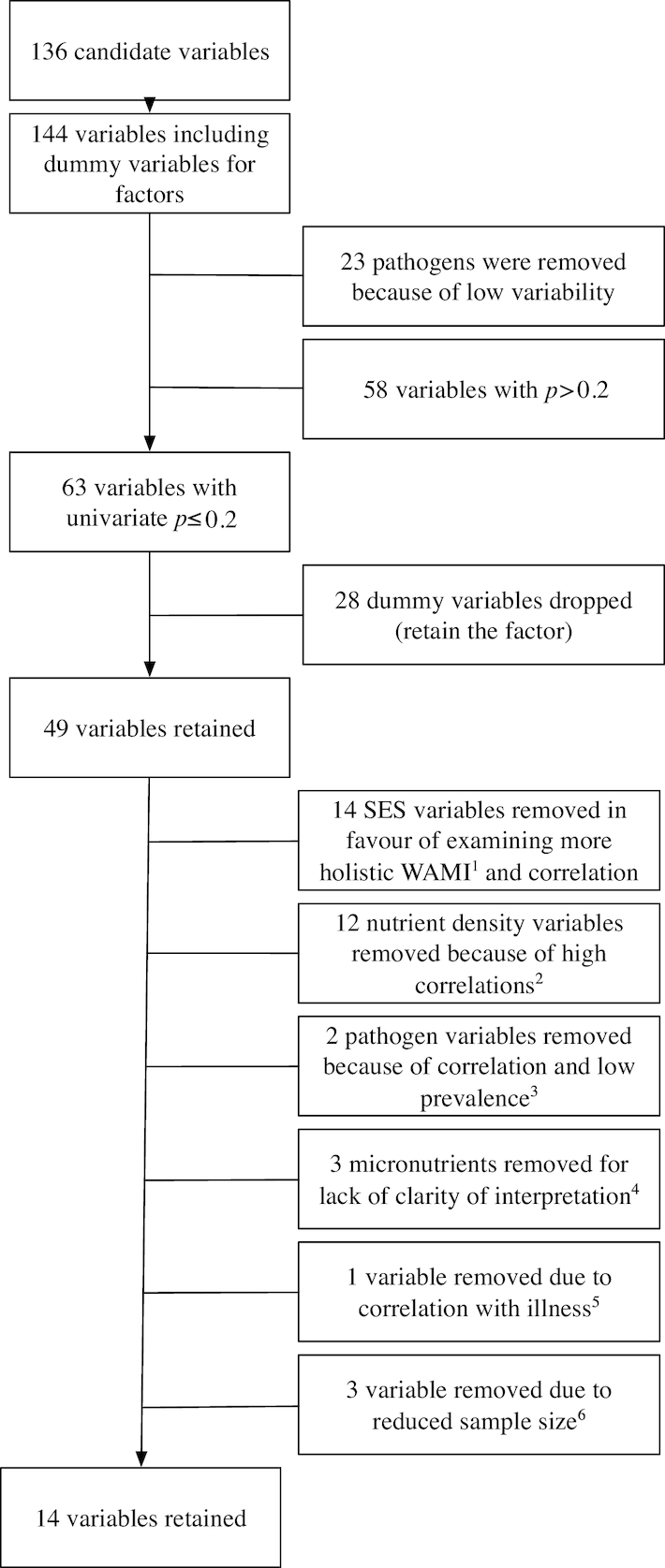FIGURE 1.

Selection of candidate variables from data collected in children and their mothers in The Etiology, Risk Factors, and Interactions of Enteric Infections and Malnutrition and the Consequences for Child Health and Development Project (MAL-ED). 1Ownership of agricultural land, ownership of a separate kitchen, floor and roof materials, the type of stove, water treatment and source of drinking water and hygiene, hand washing after going to the toilet, before food preparation and after the child defecates, mean monthly household income, years of maternal education, and the number of a defined list of assets. The HOME environmental safety variable was highly correlated with the child cleanliness variable and therefore dropped. 2Calcium, copper, iron, manganese, magnesium, potassium, and phosphorous, vitamins A, C, and E, total fat and saturated fats, protein from dairy and carbohydrate. 3Surveillance detections of A. lumbricodes (low prevalence), and the total number of pathogens because of correlation with bacterial pathogens. 4The number of observations of anemia, high transferrin receptor or low ferritin. 5The proportion of days with antibiotic given. 6The child's weight at 60 mo and at enrolment and the mother's depressive symptoms (from 6 to 8 mo). Anemia at 60 mo was also assessed, but was not significant in the univariate model.
